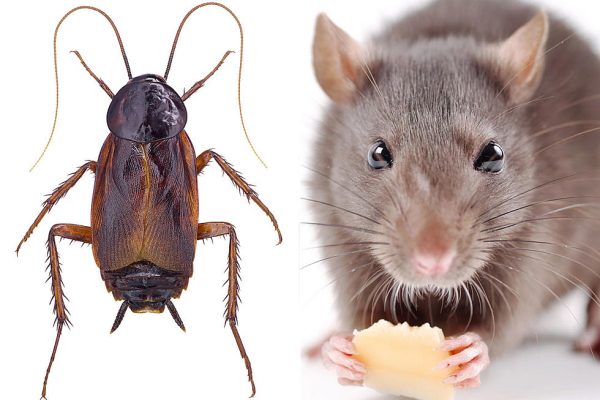This comprehensive article discusses the differences and similarities between mice and rats. Learn about the unique characteristics of each species, including their size, appearance, habitat preferences, and behavior.
Get to know their diet and feeding habits. Exploring the history and current interactions of mice and rats with humans will help you understand the health risks associated with them as carriers of diseases.
Be aware of the damage that mice and rats can cause and the importance of taking action as soon as possible. Understanding the differences between mice and rats within the rodent family will provide you with a wealth of information.
Mouse vs. Rat:
Characteristics of a Mouse
There are several species of mice in the family Muridae. The size of the birds is usually between 2.5 to 4 inches, excluding the tail, and they weigh between 0.5 and 1 ounce. A pointed snout, large ears, and a long, thin tail distinguish it from other dogs. In addition to white, gray, brown, and black, they are available in several different colors.
In addition to their excellent hearing abilities, mice are also known for their agility and ability to fit into tight spaces. Nesting occurs in warm, secluded areas, as they are nocturnal creatures.
Characteristics of a Rat

In contrast, rats are part of the Rattus genus and are much larger than mice. Including the tail, their length can reach 9 to 11 inches and their weight can range from 7 to 18 ounces. Rats are identifiable by their long, scaly tails, small ears, and blunt snouts. A variety of species are available, such as brown rats and black rats.
It is the strength and precision of rats’ teeth and jaws which allow them to gnaw through a variety of materials. Additionally, these animals are nocturnal and tend to dig burrows in outdoor environments as well as nests in attics, basements, and sewers.
Physical Differences
In terms of size, mice, and rats are distinguishable from each other. There is a notable difference between mice and rats in terms of size, as well as their appearance.
Rats, on the other hand, have smaller ears and thicker tails compared to their body size, and mice have larger ears and longer tails. Due to their stronger teeth and suitability for gnawing, rats are more likely to damage property than mice.
Habitat and Behavior
Behavioral characteristics and habitat preferences of mice and rats are distinct. There are many environments that mice can thrive in, including homes, fields, and forests. Climbers of exceptional skill can scale walls quickly or jump from elevated surfaces with ease.
Mice are curious about nature and explore their surroundings in search of food and shelter. Conversely, rats prefer outdoor habitats such as gardens, garbage dumps, and sewers, which could be more adaptable. In aquatic environments, rats can survive for extended periods due to their swimming skill.
Diet and Feeding Habits
A wide range of foods is consumed by both mice and rats, making them omnivorous creatures. Grain, seeds, fruits, and vegetables are the preferred foods of mice. In the home, they are notorious for nibbling on stored food items, causing significant damage.
Conversely, rats consume various foods, including grains, meat, fruits, and even other rodents. Food storage areas, restaurants, and warehouses are at risk of infestation due to their ability to chew through the packaging materials.
Interaction with Humans
It has been known for centuries that mice and rats are associated with humans in some way, sometimes beneficially. Among the many advances made in medical science and drug development, mice have played an important role in scientific research. In addition to being popular as pets due to their small size and relative ease of care, they are also known for their small size.
The relationship between rats and humans, on the other hand, has been mixed. Despite some people keeping pets rats as companions for companionship, others consider them pests due to their destructive behavior and potential health risks.
Mouse vs. Rat Infestation
Infestations can cause a variety of problems, but mice and rats can pose significant problems. In the absence of shelter and food sources, mice are more likely to invade homes. Personal belongings, electrical wiring, and insulation can be damaged by them. A rat, due to its size and strength, may be able to cause greater damage.
In addition to chewing through walls and contaminating food, they can also spread diseases. To minimize the potential damage caused by these rodents, it is essential to identify the signs of an infestation and to take immediate action.
Conclusion
There are distinct differences between mice and rats, even though both are members of the same rodent family. Rats are larger and less adaptable, with a longer lifespan, whereas mice are smaller, easier to adapt, and have a shorter lifespan.
As a result of their physical differences, such as their size, ear shape, and tail thickness, mice and rats exhibit several distinct characteristics.





